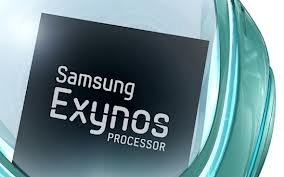Samsung Galaxy S4 CPU – How its Exynos 5 Octa-core chip works

One of the most technically interesting parts of the Samsung Galaxy S4 is its Octa-core Exynos 5 CPU. Yes, that means eight cores – the same number we’ll see in the forthcoming Sony PS4.
However, it’s not quite as simple as a “pure” eight-core processor. It uses ARM’s big.LITTLE architecture, and is really more accurately thought of as two quad-core processors that work together rather than a single gut-busting 8-core chip.
With Great Performance Comes Great Responsibility
One of the quad-core setups is a team of performance cores using the Cortex-A15 architecture. This is the same type of chipset used in the iPhone 5’s Apple A6 chip, and it’s pretty darn powerful.
This set of four performance cores is clocked at 1.6GHz in the UK version of the Samsung Galaxy S4. The phone could make do with just these four cores. But the truth of the matter is that a lot of the time, this setup is pure overkill.
This overkill results in poor power efficiency. And that means a phone that’ll probably drain its battery within a day. No-one wants that.
This is where the second set of cores come in. The efficiency cores use Cortex-A7 architecture. It’s in the same processor family and uses the same “core” architecture as the other quartet of cores, but is designed for lower-powered applications. It’s better geared towards everyday tasks – flicking through the Android UI in other words.
When the load gets that bit too much for the 1.2GHz Cortex-A7 cores, the Exynos 5 processor will automatically start switching over to the performance cores. It works as a game of tag, one set of cores replacing another rather than having the whole lot rowing the Exynos boat at the same time. However, this may change as software updates are applied, to both TouchWiz and Android.
Week-long battery life? Not Quite
This three-part system architecture, when you include the GPU, should result in pretty impressive power efficiency matched with blazing performance. However, if you think this will grant us week-long battery life, think again.
The clever Exynos 5 SoC is here to offset other elements of the phone.
First of all comes Samsung’s obsession with slim-ness. The Samsung Galaxy S4 is an extremely thin phone – almost a full millimetre thinner than the Galaxy S3. If you want to get very slim and very light, you can’t incorporate that large a battery.
The Samsung Galaxy S4’s battery has a capacity of 2,600mAh. In fairness to Samsung, that’s larger than that of the Sony Xperia Z or HTC One, this phone’s fiercest Android rivals. However, it’s a way short of the 3,100mAh monster in the Galaxy Note 2. One of the reasons we, and many others, love that phone so much is its fab battery life.
Just as important is quite how draining the Galaxy S4’s 1080p screen will be. The Samsung Galaxy S4 uses a nifty 5-inch Super AMOLED screen. It’s more advanced than the screen of the Samsung Galaxy S3, and is said to use a more power-efficient panel. However, this will be efficient relative to its specs.
There’s no getting around the fact that the Galaxy S4’s screen is massive and absolutely jam-packed with pixels – each of which acts as its own light source thanks to the way AMOLED screens function.
Octa-core – Marketing Magic or Just Practicality
When all of its Android competition in 2013 uses quad-core processors, the cynic is us wonders how much of the decision to go Octa-core was influenced by Samsung’s marketing department. If you were an average Joe phone buyer, offered the “four-core” Sony Xperia Z or the “eight-core” Samsung Galaxy S4, wouldn’t you be tempted by the sound of the latter? Early benchmarks show that it’s not really all that much faster than the quad-core HTC One.
We’ll wait to see what sort of battery power effects the Exynos 5 provides before criticising the Samsung Galaxy S4’s processor any further. Without any power management modes engaged, we found that the HTC One and Sony Xperia Z barely last longer than a day – perhaps a more dynamic CPU is just what high-end mobiles need.


